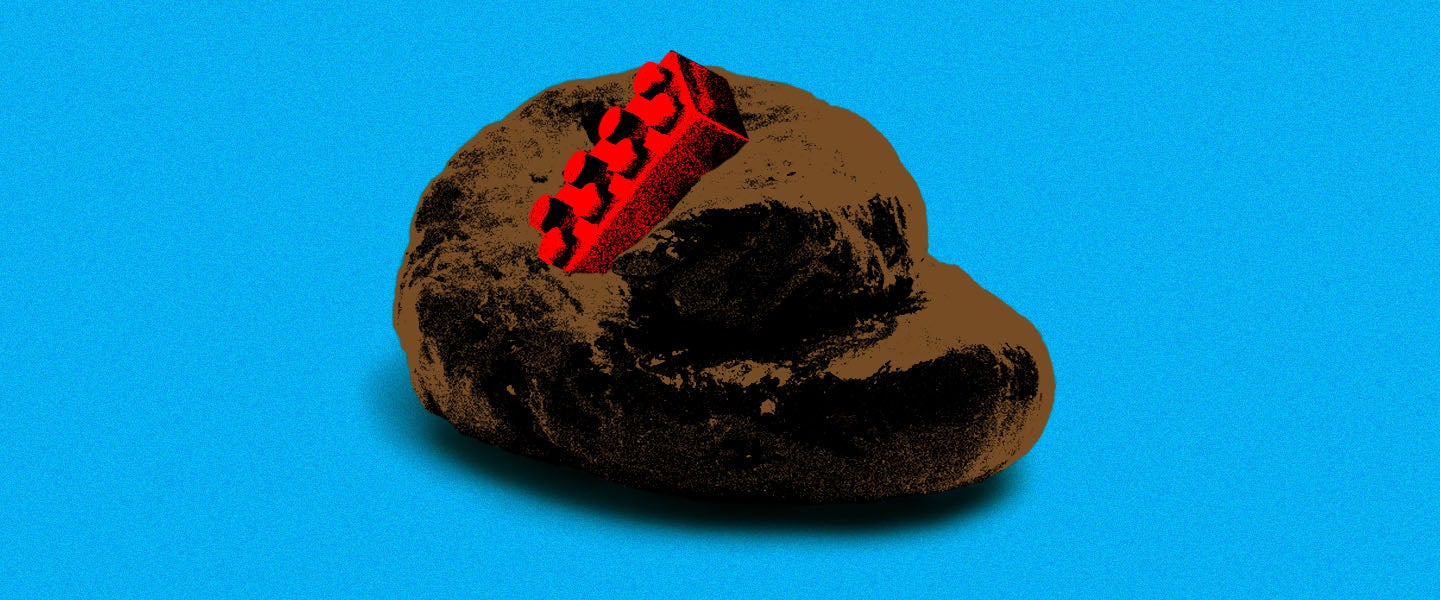Emmet, Wyldstyle, Batman and the others may have had some pretty harrowing adventures between the first Lego movie and its new sequel, but compared to some other Legos, the gang have had it pretty easy. In an experiment published in Journal of Paediatrics and Child Health, a team of six doctors swallowed a Lego head to see how long it would take for it to come out the other end.
Lead author Andrew Tagg, co-founder of the pediatric blog site Don’t Forget the Bubbles, tells me that he was motivated to try this experiment in order to help parents. “The two most common things swallowed by a child are coins and plastic toys, and while there’s plenty of data out there on how long it takes to pass a coin, there wasn’t really anything about plastic toys specifically,” he says. So he, along with some fellow pediatricians in Australia and the U.K., each swallowed a Lego head to see how long it would take to pass through the body. And to refute anyone who questioned if they really swallowed anything, they all videotaped themselves doing it.
To go along with the somewhat absurd theme of their study, the doctors developed several entertaining specs to measure. One of these was the SHAT score, which stands for Stool Hardness and Transit, in order to measure if the toy had an effect on the consistency of their bowel movements. There was also was the FART score, which stands for the Found and Retrieved Time of the brick.
For the SHAT scores, it was found that ingesting a Lego head didn’t noticeably affect their bowel movements. As for the FART scores, they varied from one to three days. The three women in the study had FART scores of 1.14 days, 1.42 days and 1.54 days and from just one to two bowel movements each. As for the guys, two of them got their Legos back after three bowel movements each — one took a day and a half and the other took three days.
Here’s the twist, though: There were three guys who were part of it, but one never found his Lego head. He spent the next two weeks digging through every piece of shit he produced but still never found it. So what happened? Tagg jokes, “I’d like to think the head is still in there, waiting for him to get a colonoscopy and then they’ll find that smiling yellow face and really freak someone out. More than likely though, it just went through and he never spotted it.”
Tagg shares that each doctor had their own method for head retrieval. “One pooped into a plastic bag and squished it around, another went through it with chopsticks.” He wasn’t sure what his colleague did who lost his head, but clearly, it was ineffective. The official study’s results even said, “There was some evidence that females may be more accomplished at searching through their stools than males, but this could not be statistically validated.”
As for what it felt like, Tagg says there really wasn’t much to it. “It felt like a pill going down and I couldn’t even feel it when it came back out.”
From these results, Tagg says that he hopes to reassure parents that if a child swallows something small enough (as long as it’s not dangerous, like a battery or a safety pin), something like a plastic toy will pass through safely without the parent having to sift through their kid’s shit for the next few weeks. And while a Lego head is nice and round, he says that even a sharper-edged Lego brick will likely be passed through safely, as long as it’s within 2 centimeters by 6 centimeters.
Despite the unretrieved head, Tagg considers the whole experiment a success, in part because it ended up being the most trafficked story ever in the Journal of Paediatrics and Child Health. He does ponder, though, for a future experiment, “I wonder if you swallowed an entire Lego man with all of their pieces separated, would they all form together in the body like Voltron?”
It’s good that someone’s asking the important questions.

